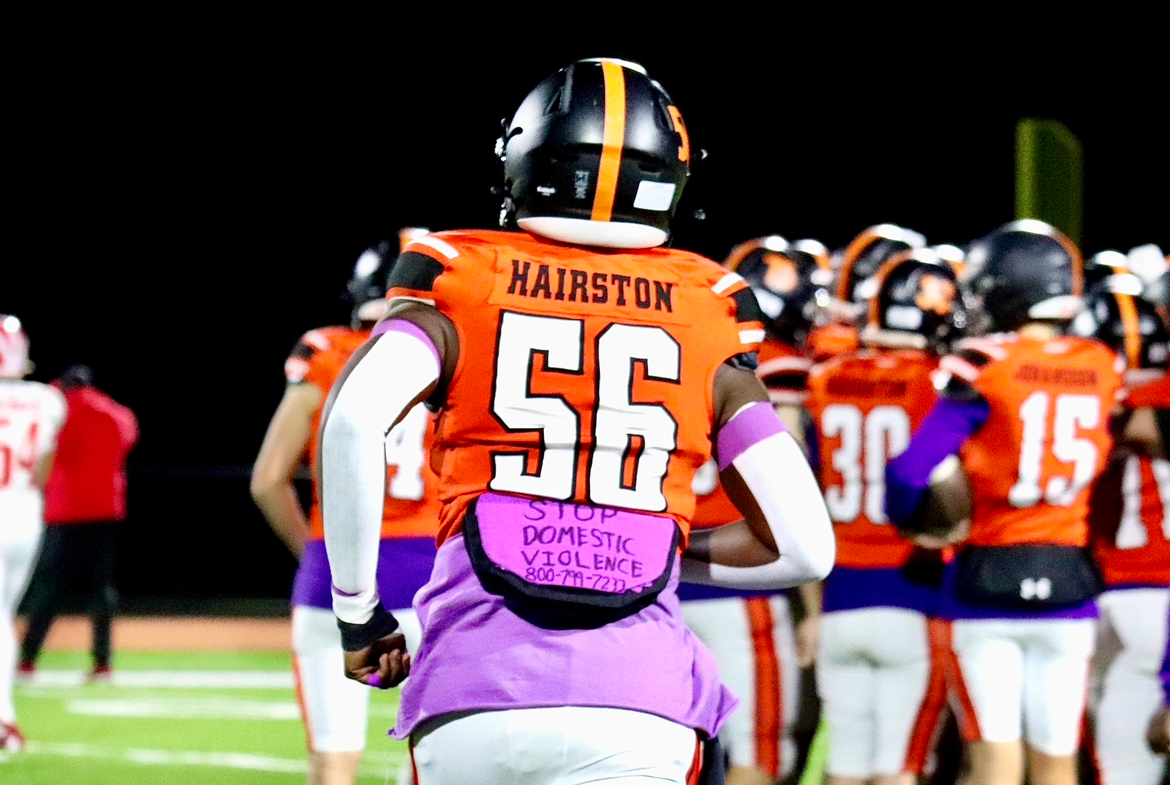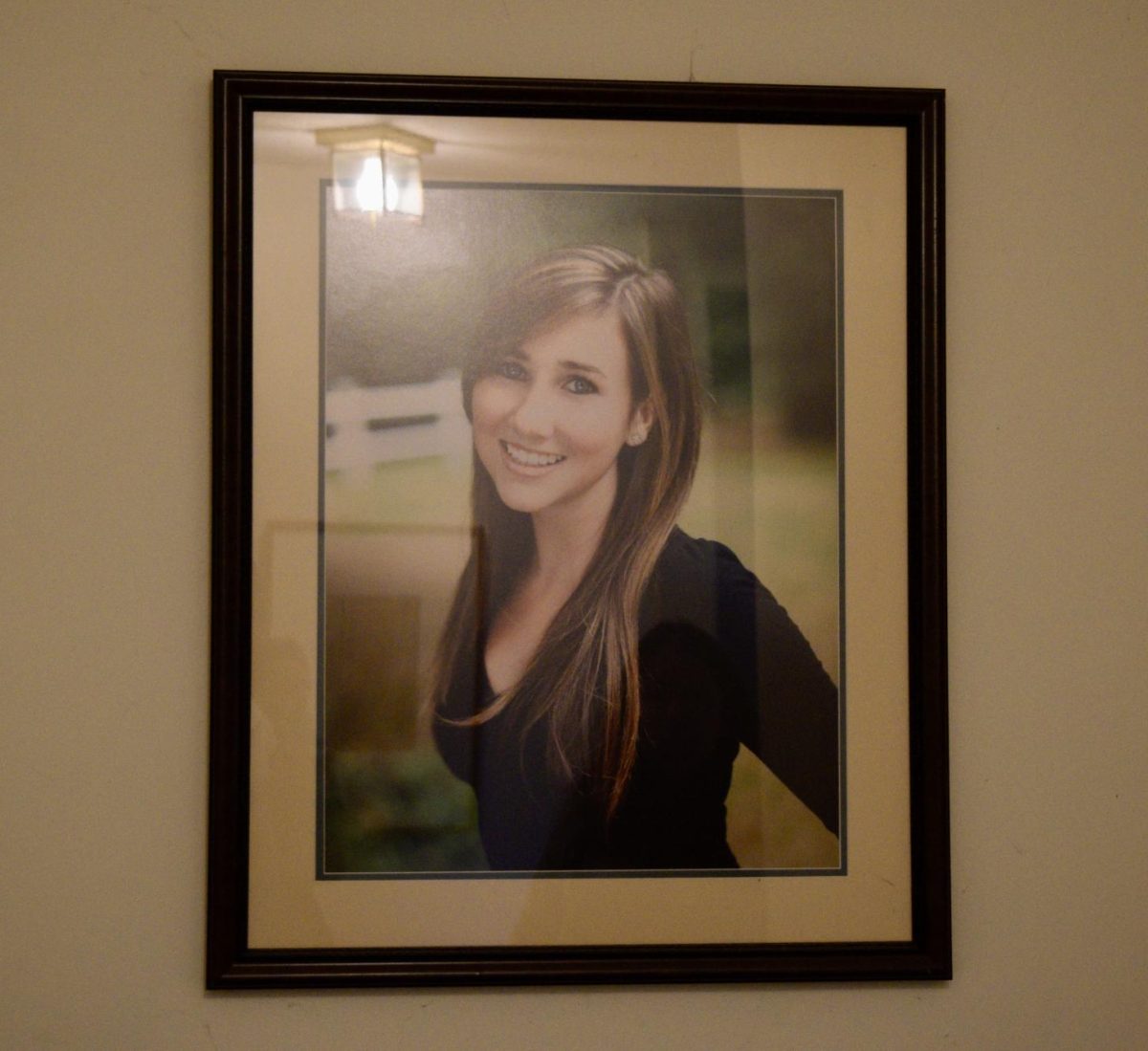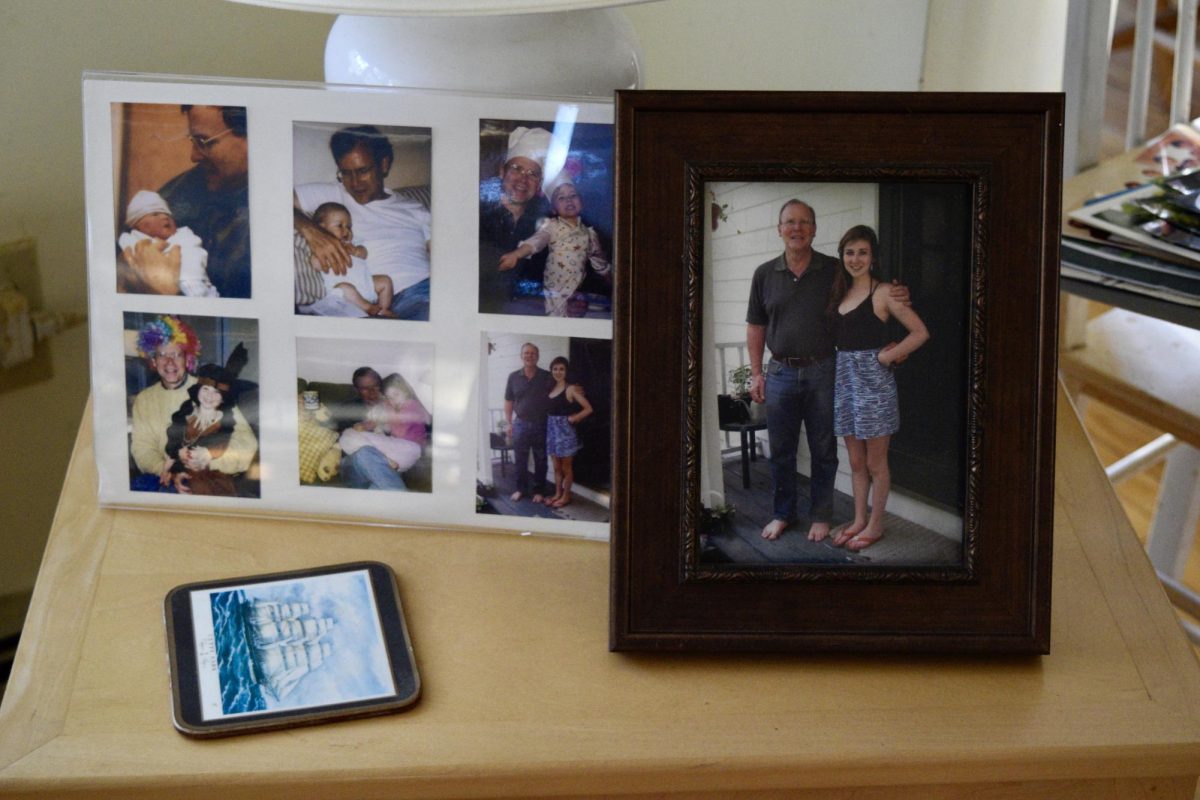More than just a statistic: The role of education in combating domestic violence

TRIGGER WARNING: This article contains descriptions of domestic violence, including abusive behavior. These discussions might be triggering to some readers. If you are in a possible violent relationship or know someone who is, Massachusetts domestic violence hotlines and resources are listed at the end of this article.
You’re sitting in your living room, watching Netflix’s new true crime documentary, “American Murder: Gabby Petito,” a domestic violence case where a young woman is killed by her boyfriend while on a road trip across America, unfolding on your screen. While watching, you think to yourself that this type of case could never happen in your own life. You think about how easy it would be to point out the signs of abuse if it ever were to happen in either your or your peers’ relationships. However, there have been countless stories of victims who state that domestic violence is much more complicated than the easily recognizable signs. What can seem like an obvious situation from the outside can be 10 times more complex and difficult to navigate when facing domestic violence directly. The warning signs can be hidden well enough, and suddenly, it’s too late.
In 2011, WHS graduate Lauren Astley was an aspiring college student, headed to Elon University that fall. On July 3, 2011, Astley was killed by her ex-boyfriend Nate Fujita after Astley had broken up with Fujita. The Wayland community learned of this news a day later and had to process that domestic violence had transpired in their town.
“We lost two lives,” Wellness Department Head Scott Parseghian said. “You know, not just Lauren, but Nate is locked up and gone. We lost two Wayland High School students, and I think everybody probably looks back and second guesses what they could have done, but I think that we’re opening the door for that [type of situation to] never happen again.”
Prior to this tragedy, WHS wellness classes did the standard curriculum required by the state surrounding relationships, but as Parseghian describes, it was not nearly as in depth as it is now. The class, called Mentors in Violence Prevention (MVP), is only taught to the junior class, lasting the entirety of their second semester.
“I admit it was almost like checking the box that we hit that standard and did a class or two, and then [the Astley] tragedy happened,” Parseghian said. “I think everybody could use [more education about domestic violence]. I mean, this is not just the young kids’ problem, this is adults, this is everybody.”
WHS started teaching the MVP course created by Northeastern University. An MVP club was also installed in order to educate juniors on the signs of domestic violence, how to prevent it and how to help a friend going through it so that the students can take it into their college life and beyond. The course serves as a way to initiate conversation about some undiscussed topics, such as gender roles, being a bystander and how substance use can lead to violence, along with providing students with teachers educated on these topics.
“Hearing from kids when they see something [is what it’s all about],” Parseghian said. “They feel confident that they can reach out to me or any of those teachers and say, ‘Hey, this is what I saw. What should I do?’ A couple of years ago, something happened at a graduation party and they called us right away on Sunday afternoon. We got to talk through everything that day.”
Along with the MVP classes WHS offers, there is a MVP Club, which gives students the opportunity to play a bigger role in educating peers on preventing domestic violence in the Wayland community.
“Our goals as a club are to make [domestic violence] less of a taboo topic in our community,” Co-MVP leader Finley Knapp said. “Obviously it is something that we wish we didn’t have to talk about, but it is a real problem, and it is in our community whether or not we like it. Talking about domestic violence allows people to feel heard and understood, and [it] helps people understand what to do if they need help or need to help a friend.”
During Astley and Fujita’s relationship, Malcolm Astley, L. Astley’s father and co-founder, along with L. Astley’s mother Mary Dunne and some other neighborhood friends of the Astley’s, of the Lauren Dunne Astley Memorial Fund, saw some of Fujita’s behaviors as being a normal part of teenage life. According to M. Astley, Fujita and L. Astley spent the majority of their time at Fujita’s home, rather than hers, but at the moment, he didn’t feel too concerned about it. Then, Fujita became socially isolated after their break up.
“There were some [warning signs] that were either missed or discounted,” M. Astley said. “We have such natural protective systems that keep us from seeing potential signs when we want things to be alright. We don’t want [to] say, ‘Oh my God, there is a potential here [for violence]’ because it’s worrisome, it’s a lot of work. We always have our doubts, [like] ‘Am I seeing [this] accurately?’”
It can be hard for people to recognize domestic violence because it comes in different forms. While physical violence is commonly known to be the most extreme form, all variations of domestic violence are dangerous as they can all result in both physical and mental trauma. According to social worker and school mental health counselor Dr. Jenny Kaplan, signs of abuse can range from physical bruising on the body, to withdrawal from activities and time with friends, to a drop in grades. Recognizing these signs early on can help people seek the support they need and break free from harmful situations.
Vanessa Taxiarchis
“We try to manipulate people to gain value, and we can manipulate in all kinds of ways, [like] financial abuse, emotional abuse, social abuse, physical, [which is] the natural big one, spiritual or religious,” M. Astley said. “There are [around] 15 different kinds. Manipulation sneaks in partly because self-worth is a taboo value. It stirs up shame.”
One of the most common behavioral signs of domestic abuse in teenagers is controlling behavior. This can happen through various different forms, including keeping track of a partner’s location, constantly checking in with them and deciding who they can spend time with. These behaviors are commonly mistaken as affection in younger relationships, but need to be recognized as red flags that an individual wants power over their partner’s life.
“The way I like to think about this with high school and college kids is that, when a partner is adamant that they track you and follow you and need to know where you are all the time, that’s when things are dangerous,” Susan Altmam, Massachusetts resident and advocate against domestic violence said. “Some people could think that’s endearing, and the partner could kind of make it seem like that, but in reality, what is happening is the victim is losing their sense of independence and control.”
Altman also pointed out how identity loss can be a common symptom of a teenager dealing with domestic violence. She emphasizes that when in a relationship, it’s important that each partner keeps a sense of independence.
“I think for high school kids it’s about keeping your own identity,” Altman said. “Each partner in the relationship has to keep their own identity, right? Each partner in the relationship has to be able to do what they want to do, when they want to do it.”

When it comes to domestic abuse, there are several different ways it can occur and present itself. The proactive way to prevent domestic violence is to educate children from a young age about what is acceptable or ‘healthy’ behavior, and what is not. According to CEO and founder of JT Consulting Jessica Teperow, this looks like teaching physical boundaries, like saying ‘they said no to your hug and that’s okay.’ This also includes talking about respect, consent and modeling empathy towards others. Helping kids realize that everyone in their life should feel respected and safe lays out a foundation for the life they have ahead of them.
“I think it’s just being aware of what is right and what is wrong,” Altman said. “You and your friends know what’s right and know what’s wrong, and if something isn’t right, you’ve gotta be able to address it in a safe way. I think talking about it and educating children on what domestic violence is and just trying to teach people to be kind human beings [is important].”
Similarly to Atlman, M. Astley has made it his life’s work to combat domestic violence. In 2013, M. Astley created the Lauren Dunne Astley Memorial Fund, which educates and provides resources about domestic violence. According to its website, the fund also works to promote “healthy teen relationships, the arts and community service.”
“I’ve always cared a lot about tragedy and those in pain, and trying to work to solve it, which is an agonizing task for humans,” M. Astley said. “We’re animals on the earth, and to bring our capacities for cognition to solve problems as right now we’re in such a giant mess in our country and the world, it [makes it] hard to solve those problems. It’s hard to work together, and so it’s just a recommitment of my life toward those kinds of goals and hopes and work.”
Along with M. Astley contributions to the WHS MVP curriculum, Teperow has come to speak to juniors about her life’s work regarding domestic, sexual and gender-based violence. When Teperow was in high school, her school had just introduced an MVP club that sparked Teperow’s passion to educate and help teens dealing with domestic violence.
“[I] had never had conversations about sexual or domestic violence,” Teperow said. “I had very misguided and very narrow ideas of what those things were, so hearing definitions, as dry and boring as that sounds, was so transformative for me. It gave me language that I hadn’t had that I needed to be able to tell people what I was going through, but if you don’t have the words, how [do] you do that. So that really was this kind of transformative experience of realizing I identify with what they’re talking about.”
As Teperow grew older, she created a college major under gender studies, sexual assault and domestic violence prevention in her college.
“I was very fortunate that my first job out of college was back here in Boston, where one of my many tasks I got to [do was to] run a peer education program for an organization in Boston, and to get to kind of mentor high school students that wanted to do the very thing that I had fallen in love with. And it’s just continued to evolve more and more since then.”
Altman also believes that it is necessary for high school and college-aged kids to become educated on domestic violence, so she speaks at schools about the dangers of domestic violence and how it can be shown. Altman realized the absolute necessity for advocacy after her sister, Stacy Feldman, was murdered by her husband.
“I tell the story [of Stacy’s murder] and the students ask questions,” Altman said. “I say to them, ‘what would you do if your best friend was in a relationship you didn’t think was safe? Would you be able to talk to your friend? Would you blow it off like I blew it off with my sister?’ I try to leave the audience with provocative questions that they will then keep thinking about after our time together.”
Some advocates think that domestic violence should be taught as soon as kids are old enough to understand it. While Teperow believes lessons need to be modified based on age, she emphasized the importance of teaching her children about domestic violence, as well as other children.
“It’s been really amazing to raise my child and be able to put into practice so much of what I’ve been teaching parents for so long as a professional, and now I gotta kind of put it into practice myself,” Teperow said. “It’s wonderful to have these conversations in high school, but we can start having these conversations in preschool and just keep building on it so that it’s not like the talk where you’re like, ‘I gotta say everything just perfectly.’ It’s an ongoing conversation, and I don’t do it perfectly every time, but because I know we’re going to keep talking about it, I don’t feel pressured to get it perfect every time.”
In addition to education regarding recognizing warning signs of abuse and prevention, some advocates argue that it is necessary to first acknowledge that domestic violence could happen to anyone, anywhere. No one town or area of the country is exempt to this type of violence.
“[Domestic violence] is common and it happens across the board,” Altman said. “It’s dangerous. We think it’s not gonna affect us or our circles. We say, ‘It’s not gonna happen in my lifetime, it’s not gonna happen in my world, it’s not gonna happen to my friends or loved ones.’ It happens to people we see on the TV, like Gabby Petito, but it is happening all around us.”
Sometimes loved ones of the victims will fear the victim being upset with them, so they gaslight themselves into thinking they are just exaggerating the signs in order to convince themselves that a situation isn’t as bad as they think. This self doubt can also be used as a different kind of coping mechanism in hopes that everything will be okay.
“I didn’t want to risk messing up my relationship with Stacy to tell her what I really thought about her husband because I feared that she would never talk to me again,” Altman said.
M. Astley, Altman, Teperow, Parseghian, Knapp and Kaplan were all insistent that the only way for your loved ones to be safe is if you are able to address the situation at hand and the feelings involved while then finding them support. While this can be difficult, taking initiative in a situation could have the ability to save someone’s life.
“My message to others is to take a risk and talk to your friends and loved ones and let them know what you think about their situation,” Altman said. “They might get mad at you and not want to be friends with you anymore, but that’s a risk I think people should be willing to take if it’s going to save a life.”
According to M. Astley, a behavior that is often overlooked, but a leading cause to violence is shame. In order to prevent people from being abusive, it’s important to check-in with the person, noticing when their behavior changes or could possibly be harmful.
“It’s a giant human mystery, but to have self-love to counter potential shame and self, the term is often used loathing, [which is] the deepest depth of hatred for the self, which is utterly crippling in the end and then can lead toward harm of others,” M. Astley said.
Although it can be uncomfortable to have a conversation with a loved one about domestic violence, some believe it could be the difference between someone staying or leaving an abusive relationship. Altman advised that when approaching the possible subject of abuse, one should keep the conversation centered on their concerns for the friend, not the abusive partner.
“We don’t want to talk about their relationship, how bad their partner is, what we want to talk about is our friend,” Altman said. “So ‘how do you feel? I’m just curious, do you think what they said is ok? I feel like you love this person, but that person is making you cry all the time. Do you think that’s normal?’ And then you could even say, ‘I’m feeling like you can’t even be as attentive to me as a friend anymore because all you’re worried about is your partner and as your friend that doesn’t feel good to me. I would never tell you how to be in a relationship, I want for your happiness, but are you happy? Is this what’s making you happy?’”
Kaplan also pointed out that reassurance of being present in whatever way your loved one needs is necessary. If a friend is concerned about another friend’s relationship, Kaplan believes that the skeptical individual needs to make their concerns clear, along with supporting their friend however they choose to move forward. Kaplan feels that if the victim has a solid support system, they will feel stronger and more empowered to get help and leave the situation safely.
“Together we can all make a difference, but it has to be together,” Parseghian said. “One person has a voice absolutely, but we’re stronger together in sports and teams or whatever philosophy. The more people you have around you that have the same vision and share that, the stronger we’re gonna be.”
Vanessa Taxiarchis
Your donation will support the student journalists of Wayland High School. Your contribution will allow us to purchase equipment, cover our annual website hosting costs and sponsor admission and traveling costs for the annual JEA journalism convention.







